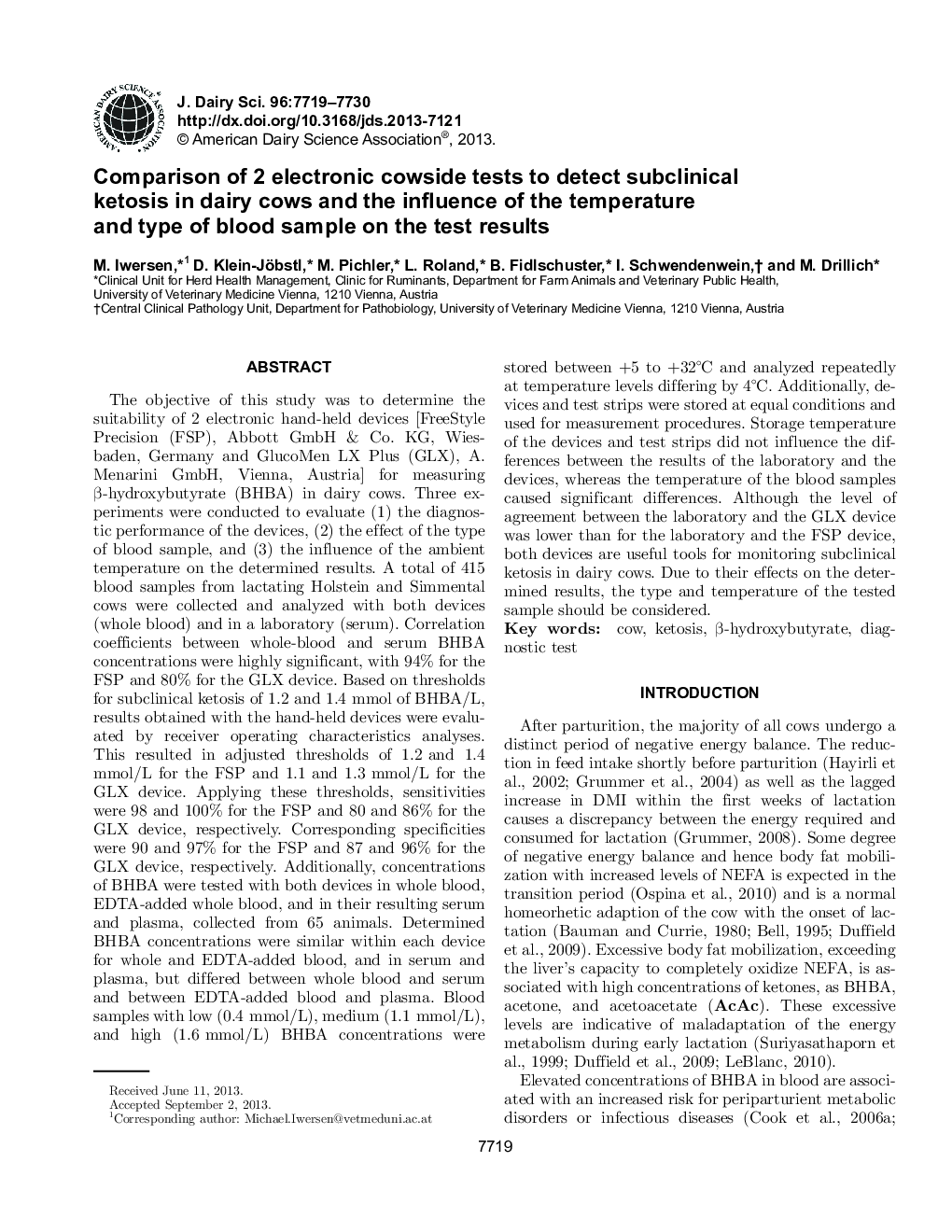| Article ID | Journal | Published Year | Pages | File Type |
|---|---|---|---|---|
| 10977303 | Journal of Dairy Science | 2013 | 12 Pages |
Abstract
The objective of this study was to determine the suitability of 2 electronic hand-held devices [FreeStyle Precision (FSP), Abbott GmbH & Co. KG, Wiesbaden, Germany and GlucoMen LX Plus (GLX), A. Menarini GmbH, Vienna, Austria] for measuring β-hydroxybutyrate (BHBA) in dairy cows. Three experiments were conducted to evaluate (1) the diagnostic performance of the devices, (2) the effect of the type of blood sample, and (3) the influence of the ambient temperature on the determined results. A total of 415 blood samples from lactating Holstein and Simmental cows were collected and analyzed with both devices (whole blood) and in a laboratory (serum). Correlation coefficients between whole-blood and serum BHBA concentrations were highly significant, with 94% for the FSP and 80% for the GLX device. Based on thresholds for subclinical ketosis of 1.2 and 1.4 mmol of BHBA/L, results obtained with the hand-held devices were evaluated by receiver operating characteristics analyses. This resulted in adjusted thresholds of 1.2 and 1.4 mmol/L for the FSP and 1.1 and 1.3 mmol/L for the GLX device. Applying these thresholds, sensitivities were 98 and 100% for the FSP and 80 and 86% for the GLX device, respectively. Corresponding specificities were 90 and 97% for the FSP and 87 and 96% for the GLX device, respectively. Additionally, concentrations of BHBA were tested with both devices in whole blood, EDTA-added whole blood, and in their resulting serum and plasma, collected from 65 animals. Determined BHBA concentrations were similar within each device for whole and EDTA-added blood, and in serum and plasma, but differed between whole blood and serum and between EDTA-added blood and plasma. Blood samples with low (0.4 mmol/L), medium (1.1 mmol/L), and high (1.6 mmol/L) BHBA concentrations were stored between +5 to +32°C and analyzed repeatedly at temperature levels differing by 4°C. Additionally, devices and test strips were stored at equal conditions and used for measurement procedures. Storage temperature of the devices and test strips did not influence the differences between the results of the laboratory and the devices, whereas the temperature of the blood samples caused significant differences. Although the level of agreement between the laboratory and the GLX device was lower than for the laboratory and the FSP device, both devices are useful tools for monitoring subclinical ketosis in dairy cows. Due to their effects on the determined results, the type and temperature of the tested sample should be considered.
Related Topics
Life Sciences
Agricultural and Biological Sciences
Animal Science and Zoology
Authors
M. Iwersen, D. Klein-Jöbstl, M. Pichler, L. Roland, B. Fidlschuster, I. Schwendenwein, M. Drillich,
